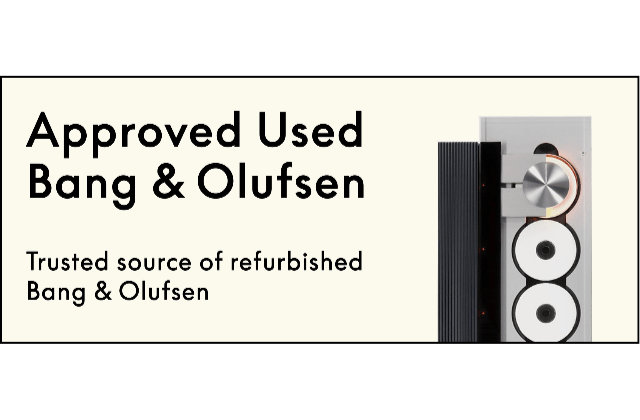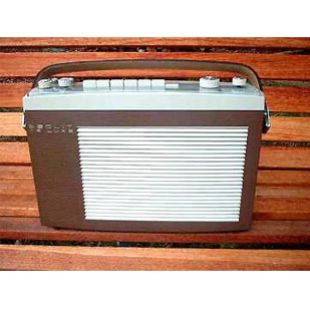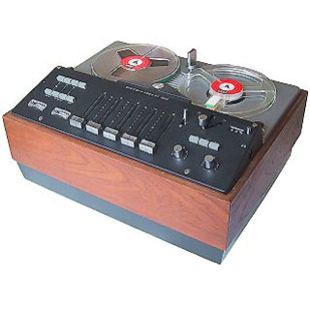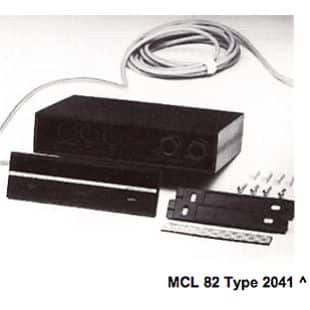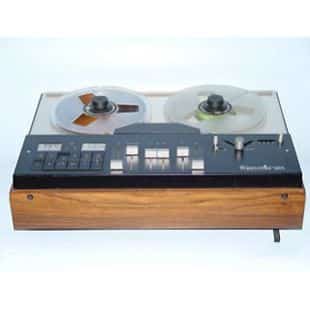BeoSound A5

BeoSound A5
Music’s next move
Beosound A5 goes where no portable speaker has gone before. Acoustically. Aesthetically. Effortlessly. Elegant looks disguise a world of power and precision that brings huge sound anywhere – in the home, or out in the wild. Serious bass. Seriously smart. With A5, you won’t know what’s hit you. Stream anything wirelessly. Connect other speakers seamlessly. All in a grab-and-go package that’s designed to be updated over time instead of replaced, so it’ll always be by your side. This is music’s next move.Sound. All around.
With 360-degree sound dispersion, everyone can tune into the music – or easily narrow the sound direction for those private listening sessions. It all happens in the B&O app.Sound. All around.
Stream wirelessly and connect with other speakers to feel immersed from room to room. Guests? With 360-degree sound dispersion, everyone can tune into the music – or easily narrow the sound direction for those private listening sessions. It all happens in the B&O app.Stream it all, easily.
This portable powerhouse is primed to bring it all together. Stream on WiFi with Airplay or Google Cast. Multiple speakers? Use Beolink Multiroom to create soundscapes around the home. No connection? Bluetooth is just a tap away.Fluid sweet spot
Beosound A5 adapts to you. When stereo paired, a single tap in the B&O app let the speakers fix an ideal stereo image on your phone’s position. That way your music will always sound exactly like it was envisioned in the studio. Change of scenery? No problem, tap again to redirect the sweet spot to your new nook. *Fluid Sweet Spot only works when using Beosound A5 in a stereo setup with Apple iPhone (Apple iPhone 11 or newer).Easy control.
And it’s easy to play your way: pause, change volume, skip tracks and access your preferred radio stations or playlists by using the favourites buttons.BeoSound A5 Product Details
Type Numbers
Please let us know
Designer
Manufactured
April 2023 -
Colour Options
Please let us know
BeoSound A5 Product Specification
Recommended Room Size
10-50 m²
100-500 ft²
Speaker Configuration
1 x 0.8″ tweeter
2 x 2″ full-range
1 x 5 ¼” woofer
Amplifier
1 x 70 W class D for tweeter
2 x 70 W class D for full-range
1 x 70 W class D for woofer
Total: 280 W
Frequency Range
32-23.000Hz
Maximum Sound Pressure Level (SPL) @1m
101dB SPL
Bass Capability
80dB SPL
Stereo Pairing
Pair two Beosound A5 to enjoy a stereo listening experience.
Advanced Sound Features
Active Room Compensation
Thermal Protection
Adaptive Bass Linearization
Customizable Sound EQ
Presets available and fully customisable through the Bang & Olufsen App
Materials
Aluminium
Wood / Paper Weave
Polymer
Dust and Waterproof Rating
IP65 (Wood components and paper weave may be damaged by water)
Dimensions (Width x Height x Depth)
28.5 W x 18.7 H x 13 D cm
Weight
3.7 KG
Power Consumption
Typical 25 W
Network standby: 3.7 W
Standby: 0.5 W
Power Supply
USB-C Power Supply
USB-C Cable
Battery Playtime
Up to 12 hours
Other
Wireless Qi Charging.
Charge your smartphones and other compatible devices wirelessly on the top surface.
Bluetooth Version
Bluetooth 5.3
Bluetooth Codecs
Android: SBC
iOS: SBC, AAC
Ultra-Wide-Band
Yes
Wi-Fi
Dual-Band Wi-Fi (2.4 & 5 GHz)
IEEE 802.11 b/g/a/n/ac/ax
Streaming Services
Apple AirPlay
Spotify Connect
Google Cast
TIDAL Connect
B&O Radio
Deezer
QPlay 2.0
Beolink Multiroom
Yes
Physical Connections
1 x USB-C (Charging & Service Port)
Remote controls
Bang & Olufsen App
Beomote One BT
Beoremote Halo
On-Device Controls
Yes
Gold or Silver membership required to view documents
Available documents are listed, if none are listed then please reach out to see if we have them.
BeoSound A5 FAQs
Please let us know






